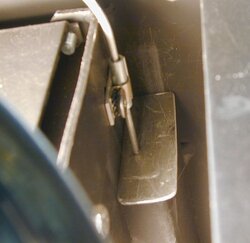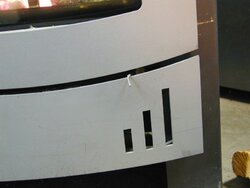So here are the three splits before I loaded last night, nothing special, probably quite small next to what some of you guys can get your stoves.
I dialled down the primary air on the airwash to about 10% after the flames had died down, and reduced the secondary air to about 20%.
I went to bed, and did wake up in the night, and crept down at 4am, just a glimmer there on the ash, and the flue pipe temp was showing 170c.
When I came down at 6-30am as usual, the fire looked as if it had gone out, but the flue pipe was showing 100c, and opening up the air just helped a few ashes to start glimmering.
Adding some kindling and a screwedup bit of paper it soon got going again, and I nipped back upstairs for a wash and shave.
By the time I was downstairs again, it was burning happily, and the usual pile of stuff got loaded

!!
The lounge temperature was 72f this morning, outside was 33f, against yesterday 67f inside and 35f outside.
I think the experiment was worth 3 splits, but I only have 103 fully seasoned oak splits left, and to burn 3 splits a night for a month would leave me with just my birch and hawthorn plus some pallets. for daytime and evening use.
Must follow the example of others on here and work like mad to get 6 or 7 years ahead on the woodpile.
Night burning will then become the norm





 !!
!!
